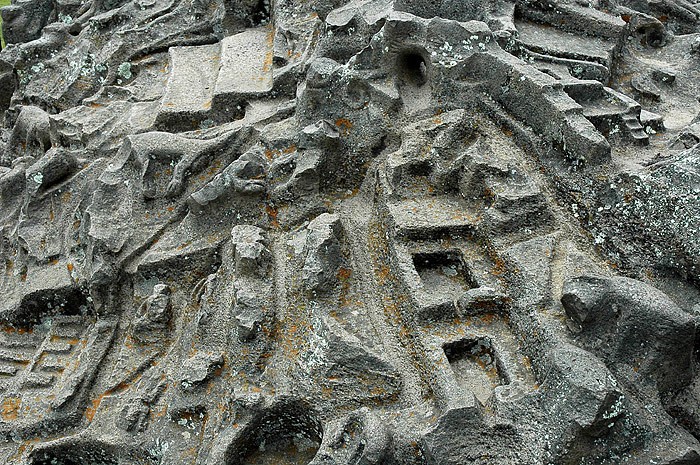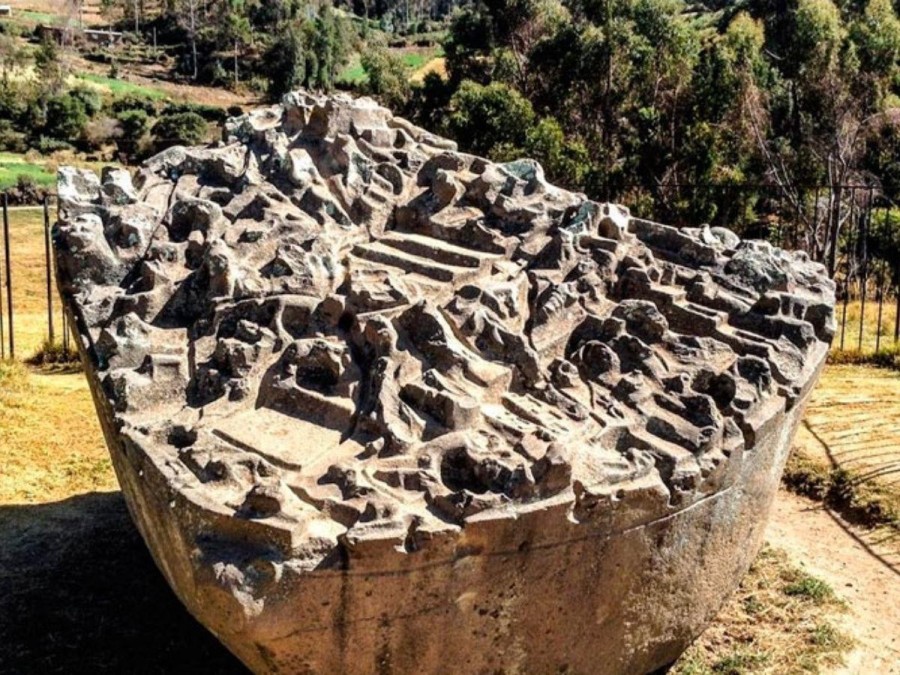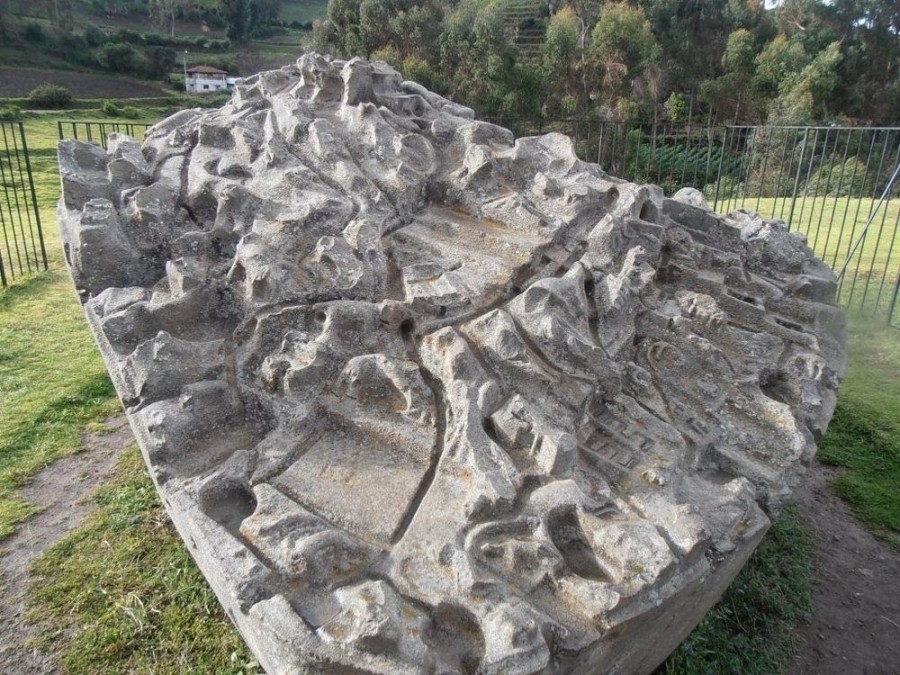Peru’s ancient mysterious sculpted stone of Saywite
The Sayhuite site is located on the route between Cusco and Abancay, in the department of Apurimac. It is delimited by 2 streams and embedded between several green hills, a small paradise on earth, whose main attraction is the Sayhuite stone: about 4 m. in diameter and 2.5 m. high, it is a huge block of granite whose upper part is carved with more than 200 symbols, whose meaning and use are still unknown and especially its use. One of the theories says that this stone represents the cosmos and living people, others speak of a construction pattern to carry, it has aqueducts, etc. There are also monoliths, carved with the profile of a throne, stairs. fountains, walls of large stones

Sayhuite is an Inca archaeological site located about 47 kilometers east of Abancay in Peru. According to historians, the place was a sanctuary related to the cult of water, with a temple that legends describe as being covered with sheets of gold the thickness of a hand. Multiple remains have been found in the place, but the strangest of all is the Sayhuite Stone.

When the Spanish arrived at Sayhuite, according to John Hemming in his book Monuments of the Incas, the temple was ruled by the priestess Asarpay who, before being captured, threw herself from the top of a nearby waterfall 400 meters high.

The remains of the temple show no trace of that gold, evidently, but scattered throughout the site are large blocks of andesite stone carved with steps, as if they had been part of a larger construction.

The strangest of all these blocks is the Piedra de Sayhuite, a huge monolith in which there are geometric and zoomorphic reliefs, such as reptiles, frogs and felines.
It was found at the top of the Concacha hill, and experts believe that it may be a kind of hydraulic topographic model. In the stone you can clearly see terraces, ponds, rivers, tunnels and irrigation canals.
What it was used for is not very clear. Arlan Andrews believes that it is a scale model to test and study the properties of water (remember that the place was a sanctuary dedicated to the liquid element), in order to carry out supply projects, or to instruct engineers and technicians .
It has been proven that the stone was remodeled several times, adding and removing elements, and changing the water courses.
The relief has dimensions of two by four meters, and today it is the main tourist attraction in the area.
Who created it is still a mystery. Although it is known for certain that the place was an Inca sanctuary, archaeologists are not sure that these were its builders.
It has been speculated that it could also be a representation of the irrigation system used by the Incas, and even a scale model of their entire empire with each of the regions represented. The jungles would be indicated by the presence of animals such as monkeys, iguanas or jaguars, while the coasts are indicated by animals such as pelicans or octopuses.
Related Post
A shocking documentary proves that mermaids do exist
SHOCKING Revelation: Thuya, Mother of Queen Tiye, Was the Grandmother of Akhenaten and Tutankhamun—What Ancient Egyptian Secrets Did She Leave Behind?
Breaking News: Astonishing Discoveries at Karahan Tepe Confirm an Extraterrestrial Civilization is Hiding on Earth, and NO ONE Knows!
Breaking News: Researchers FINALLY Discover U.S. Navy Flight 19 After 75 Years Lost in the Bermuda Triangle!
NASA’s Secret Investigation: Uncovering the Astonishing Mystery of the UFO Crash on the Mountain!
Explosive UFO Docs LEAKED: Startling Proof That Aliens Ruled Ancient Egypt!